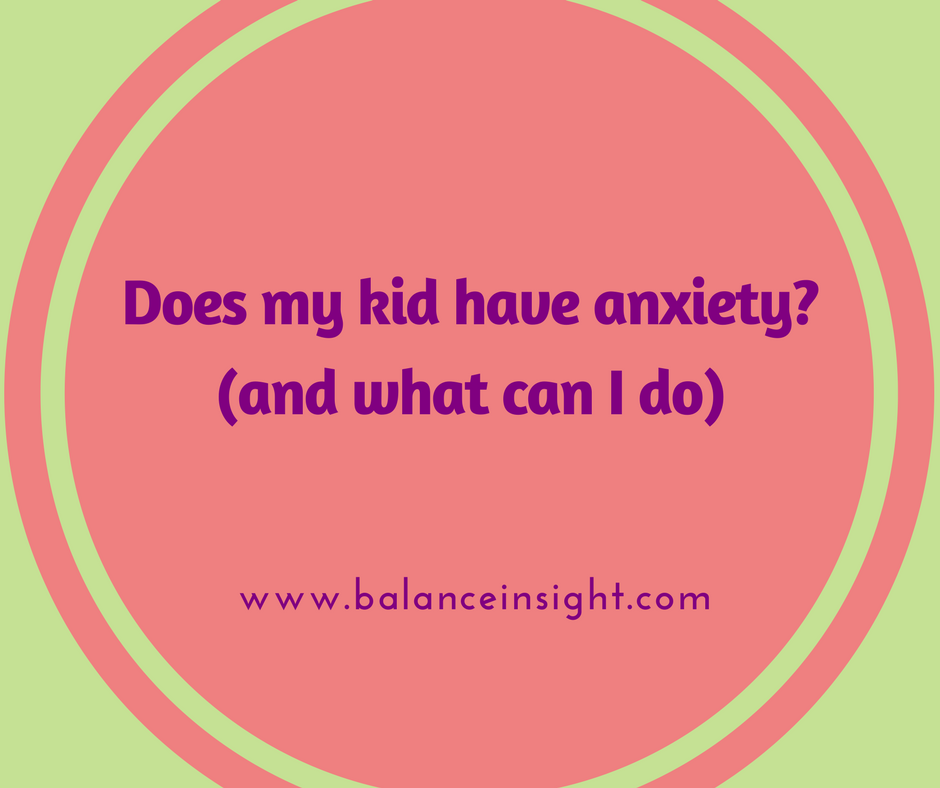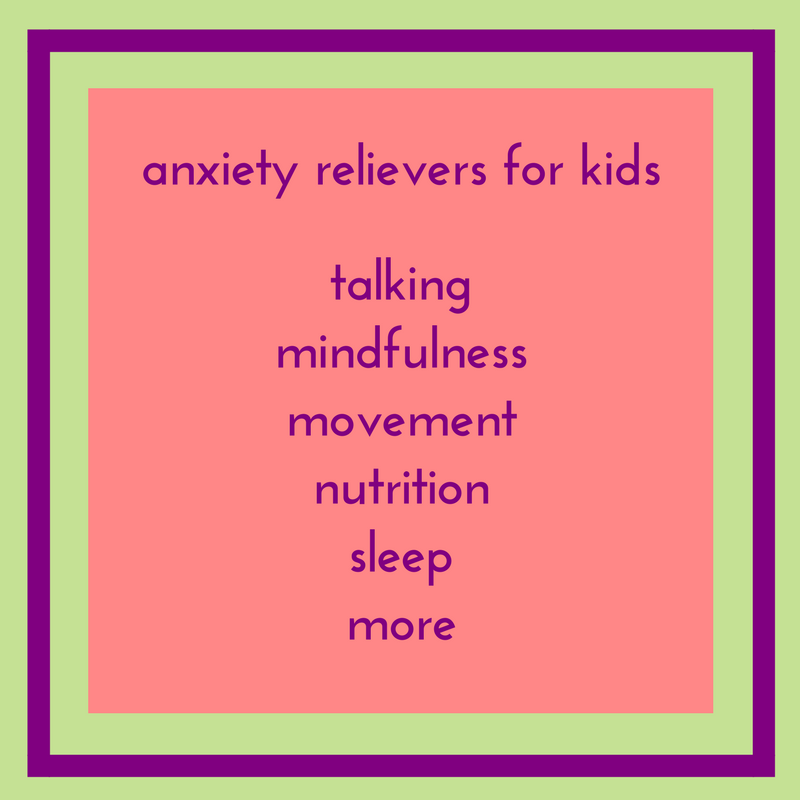If you have a child who cries often, is easily frustrated or sullen or angry, has trouble falling asleep or getting up, refuses to engage, or is obstinate, they may have anxiety.
They have outbursts over things that seem small, like a change in schedule or routine, being told no, or having to wait for something. Maybe you go to pick them up from soccer a few minutes late and they yell or cry. You ask them to clean their room and they yell (and show with a limp rag body) that they can’t.
They worry over small things their siblings or others their age wouldn’t, like a missed turn when driving them to school. They are hard on themselves and others, expecting – needing – perfection and predictability in grades, sports, relationships with peers.
They are old enough to tolerate time away from you but cling to home and the familiar. They may be afraid of what ifs that are extremely unlikely to occur (either they haven’t occurred before like a tsunami in Lake Sammamish or a lion walking down Gilman Boulevard, or if they have it was far away like Mt. St. Helens erupting).
These are some of the symptoms of childhood anxiety, which is the most common behavioral, emotional health issue in children and teens.
Whether or not your child has a true anxiety disorder, anxiety, worry, and fear can still hold them back from typical developmental and academic achievements and enjoying family and school.
Here are some ways to lessen your children’s anxiety. Bonus: they’ll help the whole family feel better and connect in fun and learning.
Talking
Not straight out talking about you, like “I’m worried about you,” because the fact that you are worried isn’t the thing, their need is the thing. You want your kid to allow you to see what’s going on without hiding it to keep from worrying you. You want them to be able to come to you, in words or actions, with their troubles and know that you can take it.
You can help. You are a problem solver and you can help. So, you can talk from a place of curiosity and love. Like, “I notice you stressing about school. Anything bugging you?” or “What’s up? Did you think I’d make you late for school when I turned early?”
For some kids, talking can be too intense. Yay for texting and instant messaging. Like talking in the car side by side for adults, texting or IM’ing are less directive or face to face and can make it easier to share and hear what’s shared. I know a woman – no not a client (what my clients tell me is strictly confidential except for danger, harm, and such) – whose son was having trouble and they instant messaged, sometimes from the same room of the house. They also wrote notes on yellow sticky tablets, responding back and forth.
Problems may not be easily solvable, or may need more thinking time, but the act of communicating with your anxious kid lets them know you’re there for them, in support of them, and loving them.
Mindfulness
This is the new thing everyone’s talking about, and it really can be fun and helpful. Listening to soothing music, walking in nature, relaxation techniques, and actual meditation are all forms of mindfulness.
I want to tell you about meditation here. It’s like a vacation for the mind. The easiest way to get started is with something called guided meditation. That’s where someone – a CD, a trusted person, or a counselor – walks them through “going” to a place that’s safe and soothing. Here’s the basic format if you want to do it for your child – if you are their trusted person.
Start comfortably seated in a quiet place. Direct your kid (and do it with them) to take a few long slow breaths, with exhales longer than inhales. Spend some time weaving a story with your kid as the main character, where they go to, spend time in, and then slowly leave their place – reminding them that it’s OK to leave since they can go back anytime they want to relax again.
Ask them to imagine walking to (I always start with them getting to the place rather than being in the place as a way to ease into it) their peaceful place. Ask them to notice sensory items, like the smell of grass or salt water, the sound of the breeze or crackling fire, the feel of fleece or warmth on their skin - depending on where their place is. The more they can feel it, the more relaxed they’ll get. You can ask them to sit, swing, fly, lay in a hammock, or whatever they like, while there.
Keep bringing in their senses. They’ll look around, listen, smell the air or objects there, and notice how light and joyful they feel (use words and senses you know work for them). Eventually, ask them to stand up (in their cozy place) and get ready to walk out the way they came. Again, bring up sights and sounds and such that they’d notice along the way. When they get back to where they started, ask them to look back and say goodbye, knowing they can return when they want peace and comfort; their place will always be there.
Tell them to notice sensory items in the actual room now, the feel of their weight on the sofa or chair, the scent of the dog in the room, or whatever you think of. And when they’re ready, they can slowly open their eyes and come back into the room. Ahhhhhh. Love doing this. They, and your other family members, might just ask you to do it again and again. I have some samples on my help page.
Movement
Movement helps with anxiety - as well as depression and other moods - in a couple of different ways. You’ve heard of runners’ high, right? That good feeling happens because endorphins and other chemicals in the brain are released upon strenuous activity. Exercise also helps us sleep better, which is healing and discussed further below. And anxiety can feel paralyzing but movement, even when it feels impossible to do, pushes that paralysis away. This can be as tiny a movement as walking to the kitchen for pretzels (see food below) or stretching out their back or legs on the living room carpet. Family dance parties get blood flowing and it’s fun to teach your kids the old moves and let them teach you the new stuff.
Food
I’d be neglectful if I didn’t talk about nutrition. We know that good food is the body’s fuel. If your kid is having trouble eating enough good food or is eating too much junk food, make a family goal to add more good stuff while eating less bad stuff. Easier said than done, I know. Some kids need to graze. So, before you say, “no more junk food” make sure to have less-junky food that’s tasty. Cookies can be healthier than candy, especially if you make them at home. Carrot sticks are not very tasty to a Snickers bar eater, but add a yummy dip and you’re increasing good food. A sweet juicy tangerine or banana dipped in almond butter don’t compare to French fries but eat them first and then there’s less stomach room for the fries. Sometimes getting kids involved in food preparation can make a difference. Plus, it gives them a way to have good stuff when you’re not able to prepare it.
Sleep
Sleep is the body’s way to repair and shore up itself. Routines go a long way here. Bed times; night time rituals of bathing, a drink of water, reading in bed, and screens off an hour before; and morning rituals of showers before breakfast, chatting over cocoa or tea, and sharing wishes and hopes for the day all help the body and mind anticipate sleeping and waking. Also, if your kid has trouble falling to sleep, a slice of peanut butter toast or handful of nuts or other protein can help, especially if it becomes part of the routine. Chocolate or anything with caffeine can make it hard to sleep, so try to hold off on these items after dinner.
A little bit more
A meditation book I like is called Sitting Still Like a Frog, by Eline Snell. It comes with a CD and is helpful for kids to about 12, and their families.
For older kids, I like The Anxiety Workbook for Teens: Activities to Help You Deal with Anxiety and Worry, by Lisa Schab. It’s got great activities for 12ish and older.
My help page. I have a couple of meditations and some activities to help with anxiety and other hard things.
Know that with support, they can feel better.
Counseling
If your kid has trouble with fear, worry, or anxiety, or other hard emotions, and you feel like you might need a little bit more help, I offer a free 15-minute telephone consultation to see if I am the right counselor for them. Call or email to schedule a consultation.
I’d love to hear about your experiences. Did you have or do you know someone who had anxiety as a kid? What was helpful for them or for you? I’m always looking for more ways to help and I’d love to add to my anxiety toolbox so thanks for sharing.
PS Did you know you can comment on this blog page with a different name to protect your privacy and the privacy of your child?


